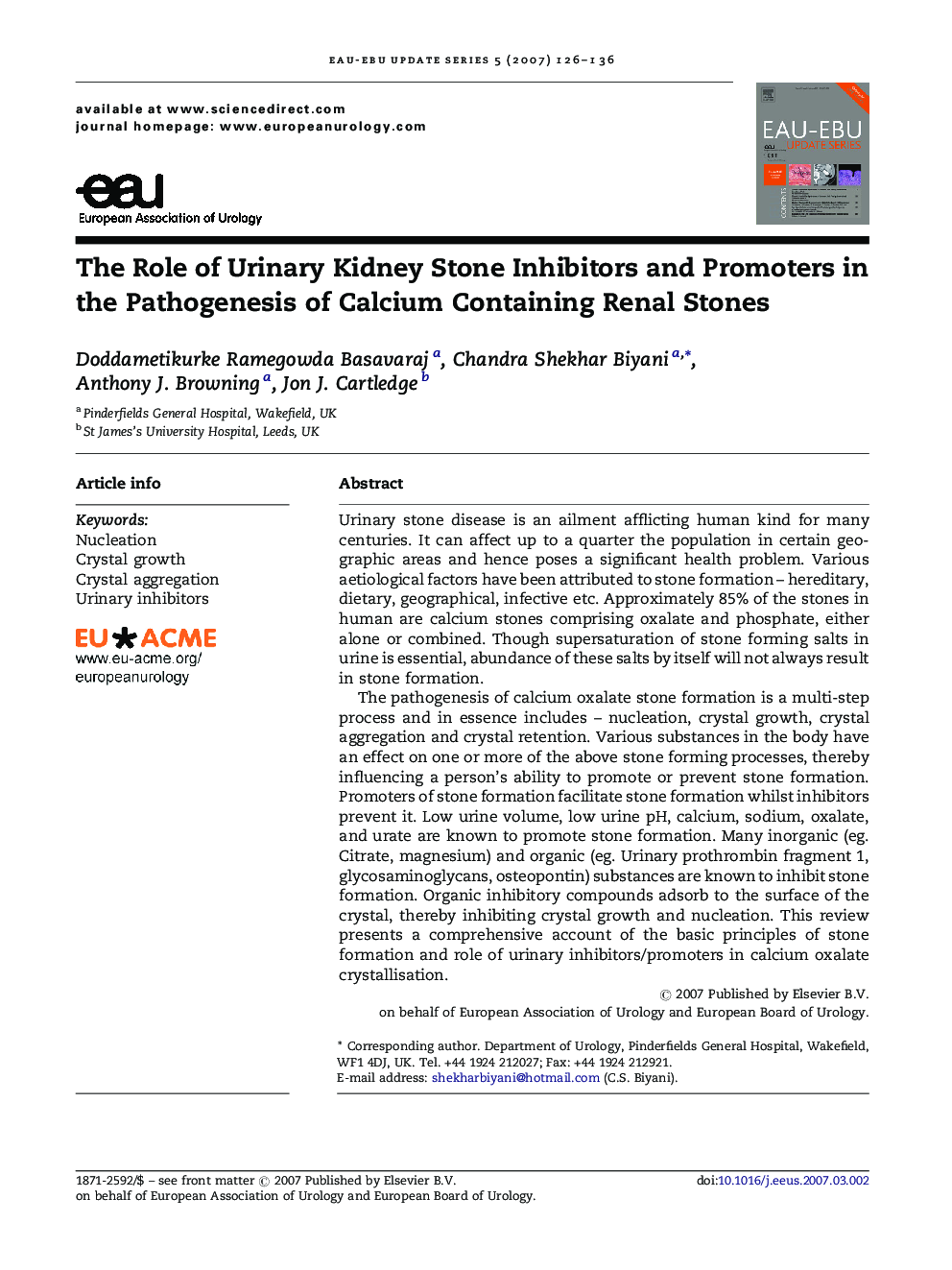| Article ID | Journal | Published Year | Pages | File Type |
|---|---|---|---|---|
| 3918891 | EAU-EBU Update Series | 2007 | 11 Pages |
Urinary stone disease is an ailment afflicting human kind for many centuries. It can affect up to a quarter the population in certain geographic areas and hence poses a significant health problem. Various aetiological factors have been attributed to stone formation – hereditary, dietary, geographical, infective etc. Approximately 85% of the stones in human are calcium stones comprising oxalate and phosphate, either alone or combined. Though supersaturation of stone forming salts in urine is essential, abundance of these salts by itself will not always result in stone formation.The pathogenesis of calcium oxalate stone formation is a multi-step process and in essence includes – nucleation, crystal growth, crystal aggregation and crystal retention. Various substances in the body have an effect on one or more of the above stone forming processes, thereby influencing a person's ability to promote or prevent stone formation. Promoters of stone formation facilitate stone formation whilst inhibitors prevent it. Low urine volume, low urine pH, calcium, sodium, oxalate, and urate are known to promote stone formation. Many inorganic (eg. Citrate, magnesium) and organic (eg. Urinary prothrombin fragment 1, glycosaminoglycans, osteopontin) substances are known to inhibit stone formation. Organic inhibitory compounds adsorb to the surface of the crystal, thereby inhibiting crystal growth and nucleation. This review presents a comprehensive account of the basic principles of stone formation and role of urinary inhibitors/promoters in calcium oxalate crystallisation.
